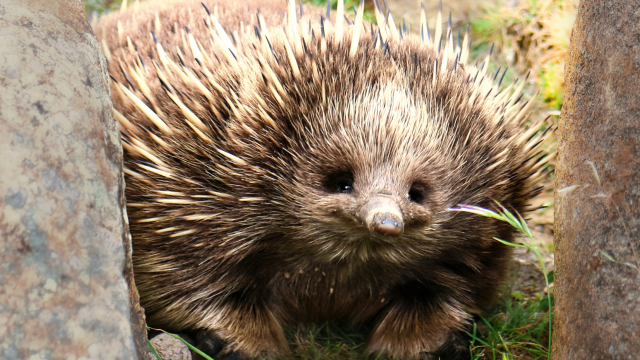Research from Curtin University has uncovered how echidnas may respond to a warming climate, and how they blow bubbles as a technique to cool down.
The world is warming, climates are changing, and sadly a lot of animals have had to adapt to changes brought on by humans (see: bin chickens).
So, when water systems could be hotter than normal, how might Australia’s humble echidna get by? Bubbles.
“We observed a number of fascinating methods used by echidnas to manage heat and which allow the animal to be active at much higher temperatures than previously thought,” Curtin University’s Doctor Christine Cooper said. She’s the lead author of the study.
“Echidnas blow bubbles from their nose, which burst over the nose tip and wet it. As the moisture evaporates it cools their blood, meaning their nose tip works as an evaporative window.”
So when Echidnas blow bubbles, they’re effectively cooling themselves down.
That’s so darn cool, god I love echidnas, did you know that a baby echidna is called a puggle? I didn’t until today! I love echidnas.
But the heat management abilities that echidnas possess don’t end there. See, echidnas can’t pant, sweat or lick to cool off in the heat, so they’ve evolved different temperature management solutions uniquely.
Their spines can insulate their body heat, while the underside of their legs can act as thermal windows, allowing for heat exchange.
As one of the two monotremes in Australia (the other being the platypus), it’s important that we not only learn from echidnas but also protect them from environmental destruction. Though they possess unique cooling abilities, they’re not immune to deforestation.
“Understanding the thermal biology of echidnas is also important to predict how they might respond to a warming climate,” Cooper added.
“Our work highlights how technological advances that allow for non-contact study of animal physiology, such as the thermal vision used in this study, can give us a better understanding of the physiological capacity of animals in their natural environment.”
Did I already say I love echidnas?
You can read about the research on the Curtin University website or read the paper in Biology Letters.
